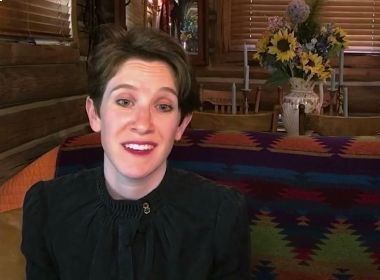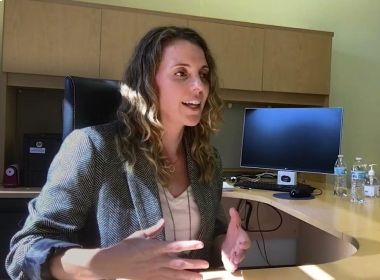
Leading Across Cultures
This course addresses the leadership skills and competencies that are requisite for leading across cultures in a global business environment. Participants will learn from frameworks, principles, and practices regarding how to leverage their cross-cultural business experiences for greater influence and effectiveness across cultural contexts (teams, organizations, regions, countries, etc.).
This course is designed to develop participants’ recognition and understanding of the biases and implicit assumptions about other cultures (ethnic, racial, national, gender, generational, functional/professional, etc.) that often erode value for organizations in global business environments and undermine leadership effectiveness in such contexts. Participants will learn how implicit bias plays a key role in organizations and many decision-making processes driven by global leaders, and how the development of CQ capabilities is critical for limiting implicit bias and its negative impact across global organizations.
Read article on The Cost Of Implicit Bias.
- CQ Drive
- CQ Knowledge
- CQ Strategy
- CQ Action
- Psychological Capital
- Intellectual Capital
- Social Capital
- Costs of implicit bias and the business case
- Biases and implicit assumptions of other cultures
- Strategies for minimizing bias as a global leader
- Personal development actions and strategies
- Team development actions and strategies
- Leadership Development Journal: Reflections and Application Questions
- Leadership Development Plan (Leading Across Cultures)

Leading Strategy
Participants will develop their knowledge and skills concerning the role of leaders in developing and executing business strategy in a global context. Participants will learn how to consistently adopt a ‘big picture’ view of the issues and challenges facing their organization in a global context to avoid the ‘silo thinking’ that often obstructs an organization’s capacity for executing strategic initiatives.
This module will introduce participants to frameworks for assessing their organization in the global business environment and develop their skills in considering organizational issues and challenges from multiple perspectives (departments, business units, geographic regions, etc.).
Overall, participants will develop deeper strategic insight into their organization and their role by enhancing their skills in identifying the critical changes in the global business environment that impacts the business.
Read article on What Leaders Need to Know: How to Develop a Global Leadership Strategy During a Time of Unprecedented Uncertainty
- Strategic Fit and Alignment
- Execution versus Learning Orientation
- Business Strategy and Sources of Competitive Advantage
- Case Analysis: Netflix, Inc.
- PESTLE Sectors
- Porter’s Five-Force Analysis
- Environmental Scanning Practices
- Strategic Planning Practices
- Supportive Learning Environments
- Learning Processes and Practices
- Leadership Reinforcing Learning
- Enhancing Strategic Thinking Skills
- Developing Learning Organization Capabilities
Leading Innovation
Participants will learn several core competencies and skills in effectively leading innovation and change across their teams and organizations. This course will focus on how leaders develop their respective team’s openness to new technology and other forms of innovation as part of change initiatives.
Participants will learn leadership competencies in remaining attentive to their teams and team dynamics that offer opportunities for adopting innovations to work processes, products, or services, including the psychological safety of team members and their willingness to take risks and provide input and perspectives that are divergent from the status quo. Participants will also develop skills in leadership agility, including actively learning from their international and global experiences, both successes and setbacks, proactively seeking feedback from colleagues and coworkers, and changing their approach to working with new colleagues and teams in different contexts (business units, regions, countries, etc.).
- Google’s Project Aristotle
- High-Performance Team Characteristics
- Leading Teams in Adaptive Contexts (Virtual, Matrix, & Global Environments)
- How Leaders Foster Psychologically Safe Teams
- Leading Change Success Factors
- Competencies for Leading Change
- Managing Resistance and Commitment to Change
- Enabling Capabilities (TMT Engagement, Leadership Development Culture, Talent Management ROI)
- Assessment Capabilities (Performance Feedback, Talent Assessment and Succession Planning)
- Transition Capabilities (New Leader Onboarding, Role-based Talent Development)
- Enabling Capabilities (TMT Engagement, Leadership Development Culture, Talent Management ROI)
- Assessment Capabilities (Performance Feedback, Talent Assessment and Succession Planning)
- Transition Capabilities (New Leader Onboarding, Role-based Talent Development)
Leading Self
Participants will first develop skills around self-awareness and then identify their personal values as leaders, leadership competency strengths and limitations or gaps, and the value of actively seeking learning opportunities from all experiences, successes, and setbacks.
In addition to learning a practical model of leader emotional intelligence, participants will develop several core skills such as addressing setbacks and obstacles constructively while maintaining a positive attitude, remaining poised during highly stressful periods, and role-modeling constructive approaches to pushing through setbacks.
Participants will also develop several leadership and influence skills that are critical to leading with emotional intelligence, including non-verbal communication and balancing the ability to communicate via both inquiry (listening, reflecting, acknowledging others, etc.), and advocacy (persuading, convincing, presenting evidence, etc.).
Read article on EQ in the Workplace.
- Leader Drift Versus Leader Flow
- Values and Leadership Principles (VALPs)
- Johari Window Exercise
- Defining Emotional Intelligence for Your Organization
- Leader Self-Awareness and Emotional Regulation
- Leader Resilience
- Expressing Ideas with Confidence and Emotion
- Body Language and Nonverbal Expression
- Inquiry versus Advocacy Communication Skills
- Experiential Exercises: Balancing Inquiry and Advocacy as Global Leaders
- Defining Your Leadership Context
- Setting Development Goals
- Developing Action Items and Metrics




